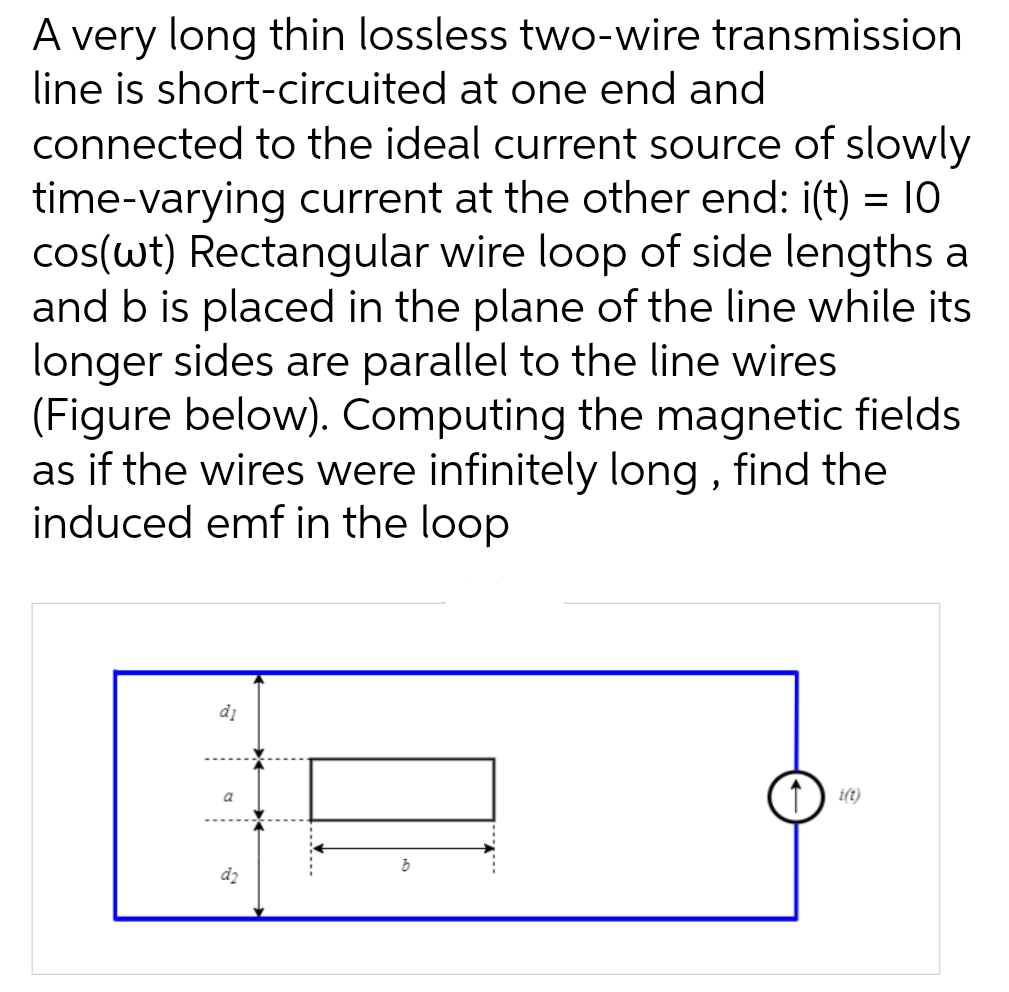A very long thin lossless two-wire transmission line is short-circuited at one end and connected to the ideal current source of slowly time-varying current at the other end: i(t) = 10 cos(wt) Rectangular wire loop of side lengths a and b is placed in the plane of the line while its longer sides are parallel to the line wires (Figure below). Computing the magnetic fields as if the wires were infinitely long, find the induced emf in the loop d₁ d₂ b (↑) i(t)
A very long thin lossless two-wire transmission line is short-circuited at one end and connected to the ideal current source of slowly time-varying current at the other end: i(t) = 10 cos(wt) Rectangular wire loop of side lengths a and b is placed in the plane of the line while its longer sides are parallel to the line wires (Figure below). Computing the magnetic fields as if the wires were infinitely long, find the induced emf in the loop d₁ d₂ b (↑) i(t)
Related questions
Question

Transcribed Image Text:A very long thin lossless two-wire transmission
line is short-circuited at one end and
connected to the ideal current source of slowly
time-varying current at the other end: i(t) = 10
cos(wt) Rectangular wire loop of side lengths a
and b is placed in the plane of the line while its
longer sides are parallel to the line wires
(Figure below). Computing the magnetic fields
as if the wires were infinitely long, find the
induced emf in the loop
d₁
d₂
b
i(t)
Expert Solution
This question has been solved!
Explore an expertly crafted, step-by-step solution for a thorough understanding of key concepts.
This is a popular solution!
Trending now
This is a popular solution!
Step by step
Solved in 3 steps with 3 images
